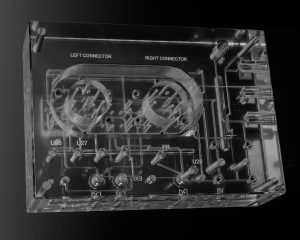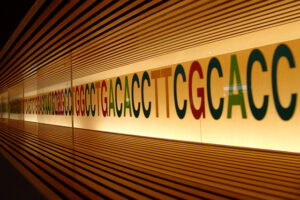A Lens To The Past
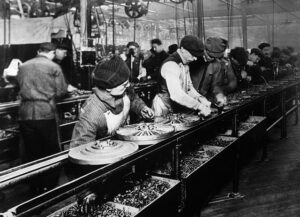
“Machines were devised not to do a man out of a job, but to take the heavy labor from man’s back and place it on the broad back of the machine.” The year was 1930 when Henry Ford said these words to Dave Wilkie of the Detroit Free Press. Ford revolutionized the automotive industry with the clever use of assembly lines only seventeen years before. From that massive success, he raised employee wages while reducing their shifts by an hour a day, hired more staff and implemented the three-shift work cycle, and forever changed the way we get around. Over a hundred years later, the fruits of sweat, innovation, and heaping helpings of moxie have pushed mass production processes in ways Mr. Ford could have only dreamed of in his lifetime. One such manufacturing strategy that has grown since the turn of the century is called lights-out.
What Is Lights-Out?
Lights-out manufacturing is a lean manufacturing process that focuses on fully automated production. So named because companies can literally turn out the lights at the factory, manufacturers everywhere are adopting facets of lights-out machining to save costs, and to increase efficiency and throughput of their production processes. In these facilities, labor can be shifted so that engineers focus on high-tech computer skills while machines handle the physical labor. A combination of CNC machinery, programming, and robotics, are three of the most crucial factors of successful lights-out operations. Their effective use can turn the role of human labor into one of human oversight.
CNC Machines
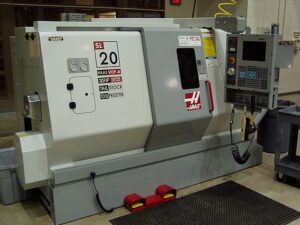
Computer Numerical Control (CNC) machines are the evolution of traditional machining tools. Like relief sculptures in art, CNC is a subtractive process – surface is whittled away from stock material to craft the desired product. Their predecessors include common machining tools like lathes, mills, and laser cutters. While previous machining generations continue to exist in many places, they require significantly more hands-on work to accomplish tasks. CNC machines on the other hand, are controlled via pre-programmed instructions and carry out machining tasks independently. Creating programmed instructions is itself a multi-step process, and CNC machinists typically live in the world of software just as much as machining.
Programming Tools
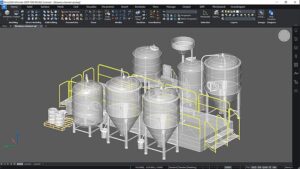
Before CNC machines can change ideas to production runs on the manufacturing floor, the product must be created in a virtual space. To this end, CNC machinists build renderings using CAD software. Shorthand for computer-aided design, CAD allows manufacturers to digitally create and simulate their products. With CAD, engineers leave cumbersome manual drafting behind in favor of precision, optimization, and the ability to manipulate drafts in real time and tweak them on the fly. From this increased efficiency, manufacturers can be more flexible in part production and boost production speed, all while lowering costs.
Once a product is drafted in CAD and approved for advancement, the file is moved to computer-aided machining (CAM) software. Autodesk.com clarifies the difference between the two in this quote, “CAD focuses on the design of a product or part. How it looks, how it functions. CAM focuses on how to make it.” In terms of machining, CAM software is responsible for things directly related to the manufacturing process itself. Some of these include determining what tools are needed to create the product, when to use tools involved in the production cycle, and checking CAD designs for geometry problems that could adversely affect the manufacturing process. CAM software is crucial to the automation process because without it, CAD would never amount to anything more than a picture on a screen.

Robotics
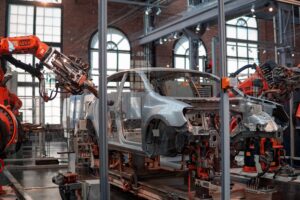
From CAD to post programming, a finalized set of instructions in G-Code allows CNC machines to fabricate products from stock material. Still, there’s another facet of automation that can streamline manufacturing processes even further, and that’s robotics. As it turns out, CNC machining and robotics have been developing together since the 1960’s, and they’ve walked side-by-side along a line that grows ever more blurry as growing technology leads them to overlap in modern industry.
Plenty of manufacturers implement facets of the lights-out process, and even without a full lights-out facility, companies gain many benefits by doing so. One of the biggest boons robots bring to the table is material handling. Imagine a manufacturing space in which robots retrieve raw material from stock, load it to be machined, choose run cycles from among libraries of stored designs, and unloads product when the cycle ends. From there, robots transfer parts to quality control where other machines check for deficiencies in geometry and run stress tests.
Material handling is a major role for robotic involvement in manufacturing, and with it fully automated mass production is possible. FANUC (Fuji Automated Numerical Control), a global leader in supplying manufacturing automation, is itself a fully lights-out factory and has been since 2001. According to The Association for Manufacturing Technology, “Approximately 50 robots are built in every 24-hour shift, and production can run unsupervised for as long as 30 days at a time.”
A Staple in Modern Manufacturing
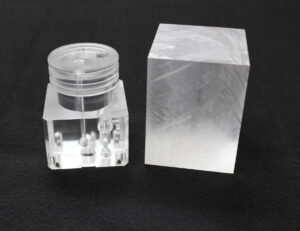
From consumer electronics to aerospace, medical and agriculture, today’s industry manufacturing involves lights-out processes somewhere along the way. The lights-out concept is a modern, high-tech approach to improving production speed, lowering costs, reducing defects, and creating safer work environments in manufacturing. The combination of CNC, programming, and robotics allows manufacturers to turn stock materials into state-of-the-art products in record time. In the fast paced world we live in, it’s no wonder manufacturers lean more into these technologies every year.
Follow these links to learn more about us, our machining, or for information about our rapid prototyping services.

